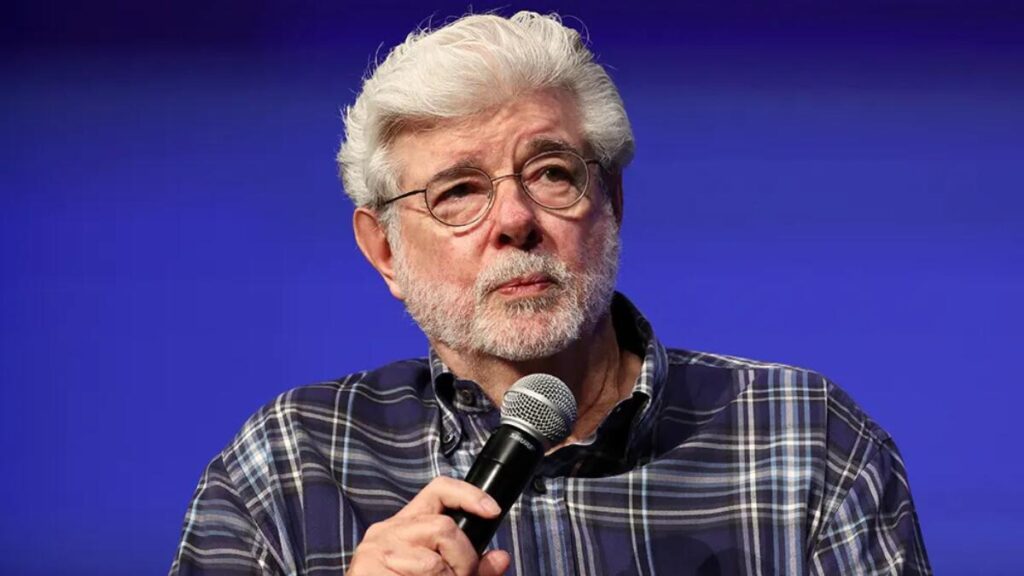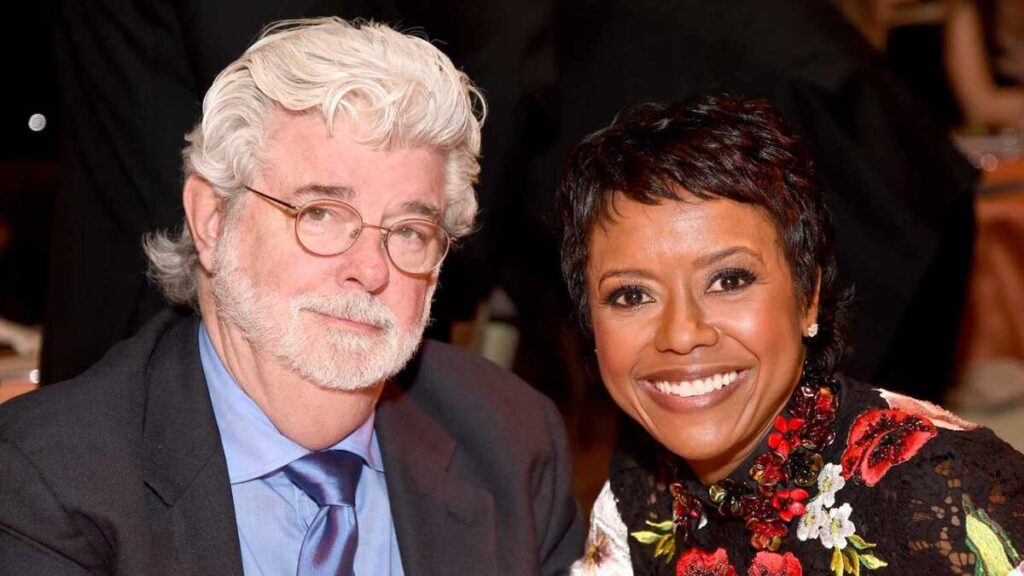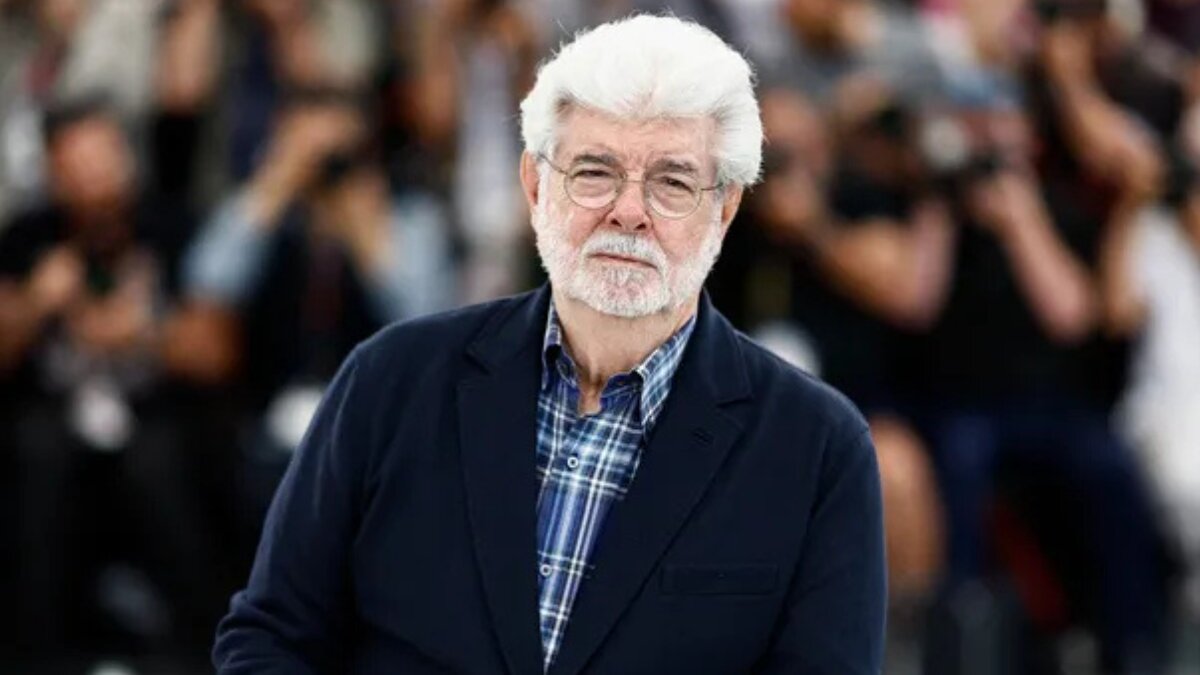In 2025, George Lucas’ net worth is estimated at over $5.3 billion, placing him among the wealthiest creatives in history, not just in film, but across global entertainment. But what makes this figure so compelling isn’t just its size; it’s how. Lucas didn’t build his fortune through red carpets or a string of high-paying gigs — he did it by betting on a galaxy no one believed in, retaining control of his vision, and redefining the economics of storytelling.
Today, as Star Wars continues to expand under Disney’s umbrella — with new films, streaming series, and merchandising lines — the echoes of Lucas’ original business decisions are still generating billions. His story is more than one of cinematic success; it’s a blueprint for how creators can turn intellectual property into legacy-scale wealth. This article unpacks the pivotal moments, strategic moves, and quiet revolutions that turned a once-scrappy filmmaker into a self-made media mogul — and what it all says about the future of creative ownership.
How a Sci-Fi Rebel Rewrote Hollywood Rules
Before the billion-dollar deals and space operas, George Lucas was just another film student with a camera, a cause, and a chip on his shoulder. Growing up in Modesto, California, Lucas was fascinated not with Hollywood glamour but with cars, comics, and the visual rhythm of motion. That early obsession with speed and structure eventually led him to the University of Southern California’s film school, where his iconoclastic instincts were already clear. While his peers chased conventional narratives, Lucas leaned into experimental visuals and dystopian themes — more Kubrick than Coppola.
His first full-length feature, THX 1138, was cold, cerebral, and financially disappointing. But it was also a clear signal: Lucas wasn’t going to chase mainstream success — he was going to challenge the medium itself. That bold streak paid off with American Graffiti (1973), a nostalgic, low-budget hit that tapped into a generation’s identity and netted him critical and commercial acclaim. Instead of cashing out, Lucas used his success as a bargaining chip, pushing for creative control and future rights, even when studios balked.
He didn’t just direct films — he rewrote the terms of creative ownership, brick by brick, before ever building his empire.
The Anti-Studio Auteur
George Lucas didn’t just dislike studio interference — he built his entire career around avoiding it. After THX 1138 was recut by Warner Bros. without his approval, Lucas realized he couldn’t fulfill his creative vision within the traditional studio system. “I felt like I’d been violated,” he later said in an interview, referring to the experience. That moment didn’t just frustrate him — it catalyzed a lifelong commitment to creative independence.
Lucas’s solution wasn’t rebellion through rhetoric; it was rebellion through infrastructure. He founded Lucasfilm, financed his projects, and negotiated groundbreaking deals that gave him complete control over his work, including merchandising and sequel rights — moves virtually unheard of at the time. His actions weren’t about ego; they were about freedom — the ability to tell stories on his terms, even if it meant risking his own money. That foresight laid the groundwork for a fortune not built on salary, but on sovereignty.

The Star Wars Effect — Ownership, Licensing, and Billion-Dollar IP
When Star Wars premiered in 1977, critics weren’t the only ones stunned by its impact — the real shock came behind the scenes, where George Lucas had pulled off one of the most lucrative deals in entertainment history. Instead of demanding a larger director’s fee, Lucas negotiated something far more valuable: ownership of the Star Wars intellectual property and full control of merchandising and sequel rights. At the time, the studio saw it as a minor concession. In hindsight, it was a business masterstroke.
Lucas understood early on that the story he was telling could live well beyond the screen. From toys and lunchboxes to video games and expanded-universe novels, he transformed Star Wars into a living brand ecosystem — one of the first and most successful cinematic IPs in history. By treating storytelling as a scalable asset, not just a single product, Lucas turned fan culture into financial infrastructure.
For creators today, the lesson is profound: own your vision, and the revenue follows. Star Wars wasn’t just a pop culture event — it was a case study in how myth-making, strategic rights management, and long-term thinking can create an empire of more than just planets.
The Business Genius Behind the Galaxy
George Lucas didn’t just craft a cinematic universe — he built the production tools to bring it to life, and then owned those tools outright. When existing special effects studios couldn’t deliver his vision for Star Wars, Lucas founded Industrial Light & Magic (ILM). What began as a necessity quickly became a Hollywood gold standard, producing effects for dozens of major franchises — from Jurassic Park to The Avengers — and generating massive outside revenue.
He did the same with Skywalker Sound, which evolved from an internal audio department into a premier post-production powerhouse. These weren’t vanity projects; they were vertically integrated revenue streams that supported his independence. And while licensing might sound dry, Lucas turned it into high art — Star Wars toys alone have generated over $14 billion in sales since 1977. Each spin-off, Lego collaboration, and theme park ride was another stream flowing back to Lucasfilm — which he owned, entirely, until 2012.
In a pre-startup world, Lucas essentially built the first modern content ecosystem — a network where creativity and commerce were intertwined. His genius wasn’t just storytelling — it was knowing how to own, scale, and monetize the story from every possible angle.
Also See: Top 50 Richest Directors in the World
The $4.05 Billion Deal — What Selling Lucasfilm to Disney Meant
When George Lucas sold Lucasfilm to Disney in 2012 for $4.05 billion, it was more than a headline — it was the passing of a cultural torch. The deal included a half-cash, half-stock structure, instantly making Lucas one of Disney’s largest individual shareholders. That equity piece quietly multiplied over time, as Disney’s market value soared on the back of Star Wars sequels, spin-offs, and streaming expansions.
But the sale also marked a profound shift in Lucas’ identity — from active storyteller to legacy steward. Though he consulted on early creative directions, Lucas ultimately stepped back, stating, “It’s time for me to pass it on to a new generation of filmmakers.” For a man so defined by control, the choice was surprisingly philosophical. He likened the process to raising a child and then letting it go — difficult, but necessary.
The deal wasn’t just a business exit. It was Lucas choosing permanence over control, legacy over ownership — and still walking away with a stake in the very universe he built.
From Creator to Cultural Architect
Even after selling Lucasfilm, George Lucas didn’t vanish into the background — he evolved into something quieter, but no less influential. Though he handed over the reins of Star Wars, Lucas remained a touchstone for the franchise’s direction, particularly during the early Disney transition. His fingerprints can still be seen in the values, aesthetics, and mythological structure of the universe he built.
But perhaps more telling is where Lucas directed his wealth: into shaping minds instead of just media. He pledged the vast majority of his fortune to philanthropy, primarily through the George Lucas Educational Foundation, which champions innovative teaching models and equitable access to learning. His long-standing belief that “education is the single most important job of the human race” speaks volumes about how he sees his legacy.
Lucas didn’t just build stories — he invested in storytellers. In doing so, he shifted from cultural creator to cultural architect, crafting a long arc that extends well beyond the big screen.
Net Worth in 2025 — Breaking Down the Billion-Dollar Portfolio
As of 2025, George Lucas’ net worth is estimated at $5.3 billion, according to the latest figures from Forbes. But unlike many of his celebrity peers, Lucas didn’t earn his fortune through endorsements, personal brands, or even a high volume of projects. Instead, his wealth reflects decades of strategic ownership, equity, and quiet compound growth.
A significant chunk of his fortune comes from the Disney stock he received in the 2012 Lucasfilm sale. Over the years, those shares — bolstered by blockbuster Star Wars releases, Marvel crossovers, and Disney+ expansion — have appreciated dramatically, making Lucas one of the wealthiest private shareholders in the company.
Then there’s real estate. His famed Skywalker Ranch, valued in the hundreds of millions, isn’t just a creative retreat — it’s a prime piece of Northern California property. Add to that a carefully managed portfolio of investments and licensing royalties from decades of Star Wars IP usage, and you get a portfolio built on patience and leverage, not just paychecks.
Lucas’s net worth tells a larger story: when you own the world you build, you don’t need to chase fame — your vision earns for you, even in your absence.
What Sets Lucas Apart From Other Billionaire Creators
In an era when most billionaire entertainers rake in fortunes through endorsements, production deals, or high-visibility brands, George Lucas stands in stark contrast. He’s never been the face of a fashion line or the voice of a luxury brand campaign. In fact, he’s barely in the spotlight at all. What sets Lucas apart is that his wealth didn’t happen to him — he architected it, deliberately and early.
Where peers like Oprah Winfrey or Tyler Perry leveraged media platforms to extend their brands, Lucas built infrastructure: ILM, Skywalker Sound, LucasArts, and the sprawling Lucasfilm apparatus. His fortune grew not by selling himself, but by owning the means of production, then letting the content do the talking — again and again, across generations.
He didn’t rely on studio contracts or back-end points. Instead, he held the keys to a self-sustaining creative ecosystem — one that generated revenue from licensing, technology, and fan devotion. That quiet intentionality — the choice to build rather than borrow — makes Lucas not just a wealthy creator, but a rare case study in long-term wealth through intellectual property.
Also See: Top 50 Richest Producers in the World
How George Lucas Stacks Up Against Hollywood Titans
With a 2025 net worth exceeding $5.3 billion, George Lucas outpaces nearly all his creative peers — including longtime friend Steven Spielberg (estimated at $10 billion), James Cameron (around $800 million), and even media titan Oprah Winfrey (approximately $3.1 billion). But the gap isn’t just numerical — it’s philosophical.
Where Spielberg leveraged long-term partnerships with studios like Universal and DreamWorks, and Oprah built an empire through her brand, Lucas chose quiet control over public presence, focusing on backend ownership and IP autonomy from the start. Cameron, for all his box office success, works largely within studio systems. Lucas, by contrast, built his own — and then sold it.
Each of these icons shaped their industry, but Lucas’s approach was structurally different: less dependent on appearances or production volume, and more rooted in systems, licensing, and infrastructure. His wealth is not only larger — it’s more autonomous. That’s the difference between creating hits and creating the engine that powers them.
The Outlier Among Billionaires
George Lucas didn’t ride the entertainment wave — he created the ocean it flows through. Unlike most billionaire creatives, Lucas didn’t accumulate wealth by investing in someone else’s vision or licensing his image. He built his empire on the back of a single, self-owned idea — and let that universe expand on his terms.
In Hollywood, directors may achieve acclaim, even power, but rarely personal ownership. Spielberg, Cameron, and others revolutionized cinema, but their fortunes still depend on studios and production partnerships. Lucas is one of the only filmmakers in history to become a billionaire almost entirely through intellectual property.
That ownership-first philosophy turned Star Wars into more than a franchise — it became a perpetual income engine, monetized through toys, games, books, and brand extensions. While others cashed checks, Lucas collected royalties, licensing fees, and equity — making him not just a creative outlier, but a financial anomaly. Few have done it his way — fewer still ever will.

Beyond the Box Office — Investments, Real Estate, and Quiet Empire Building
While Star Wars may be George Lucas’ crown jewel, his wealth didn’t stop with box office receipts or licensing deals. Much of his financial strength today is tied to long-term, low-profile investments that reflect his quiet, strategic nature. At the center of it all is Skywalker Ranch, a sprawling, 4,700-acre estate in Marin County, California — part working studio, part sanctuary. Though it’s not open to the public, it houses cutting-edge production facilities and a vast private archive, rumored to include one of the best screening rooms in the world.
Lucas also made smart moves in private technology ventures, many spun out of the innovations required to produce his films — including early digital editing and sound systems. Rather than flash wealth through yachts or private islands, he’s channeled money into infrastructure, art preservation, and philanthropic tech efforts.
There’s a pattern here: long-term assets, high utility, low visibility. Lucas didn’t invest to be seen — he invested to build, and that mindset has preserved and grown his fortune far beyond the cinematic spotlight.
Legacy-Driven, Not Flashy
Unlike many billionaires whose fortunes seem to demand the spotlight, George Lucas remains remarkably private — even elusive. He doesn’t own a sports team, flaunt superyachts, or regularly appear on red carpets. In an age of curated Instagram lifestyles and high-visibility philanthropy, Lucas has quietly carved out a different path — one rooted in legacy, not luxury.
His most public “indulgence,” Skywalker Ranch, isn’t a vanity project; it’s a creative retreat, built to support filmmakers and preserve cinematic craft. Instead of chasing visibility, Lucas prioritizes impact behind the scenes — funding educational programs, building scalable creative infrastructure, and supporting causes aligned with long-term change.
In contrast to the flash of Elon Musk or Richard Branson, Lucas’ version of influence is quiet, deliberate, and values-driven. The absence of spectacle isn’t a lack of ambition — it’s proof of a different kind of wealth: one measured not by possessions, but by what’s built, preserved, and left behind.
How George Lucas Views Wealth and Purpose
“I’m not a businessman,” George Lucas once said, “I’m a filmmaker. But I learned very early on that if you want to tell your story your way, you have to control the process.”
That philosophy — creative control as a form of freedom — runs like a thread through Lucas’ entire career. For him, wealth wasn’t the goal. It was the byproduct of ownership, the reward for betting on himself when no one else would. “Money’s not the motivator,” he’s said. “Making great movies, telling stories — that’s what I care about.”
Still, when that money came, Lucas didn’t hoard it — he repurposed it. Through the George Lucas Educational Foundation and other philanthropic arms, he’s poured hundreds of millions into initiatives that support equitable access to education. “What we’ve got to do is educate ourselves out of this mess,” he once remarked. “Education is the single most important investment we can make.”
There’s no grandstanding in how Lucas speaks about wealth. No bravado, no applause lines. Just a quiet conviction: creativity should serve a purpose, and fortune should serve others.
George Lucas’ Wealth Is Just One Star in a Larger Universe
George Lucas didn’t set out to become a billionaire — he set out to tell a story no one else could see. The wealth, the empire, the legacy — those followed because he refused to compromise on ownership, vision, or integrity. In a world where creators often surrender control for exposure, Lucas did the opposite: he built a world, believed in it, and held on tightly enough for it to reward him for decades.
His story reframes success as a function of creative conviction backed by strategic infrastructure. Lucas proved that storytelling and business aren’t opposing forces — when balanced with intention, they create lasting value, both cultural and financial.
And perhaps that’s his greatest influence: not just the lightsabers, the lore, or the iconic films — but the roadmap he left behind for future creators. A reminder that when you own what you build and stay true to your vision, wealth doesn’t just find you — it grows with you.
George Lucas didn’t chase the galaxy. He built one.
Mohit is a finance and entertainment writer specializing in celebrity wealth, brand strategy, and media empires. As Co-Founder of TheNetWorths.com, he brings over a decade of experience analyzing public income streams, endorsement deals, and the evolving creator economy.

















4 thoughts on “George Lucas Net Worth 2025: How the Star Wars Creator Built a $5.3 Billion Empire”